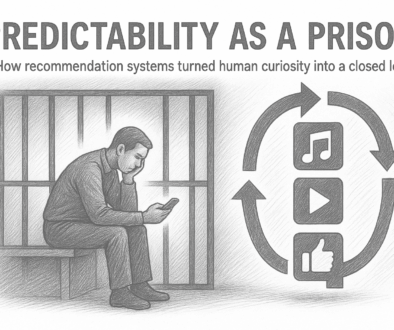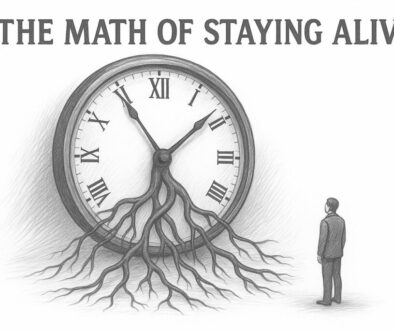Hey creative rebels —
Let’s start with a brutal truth: most of your competitors are boring.
Their campaigns blend into a sea of sameness. Their social posts are indistinguishable. Their websites? Templates with empty words and safe colors. And yet — so many brands still copy them.
Why?
Because in the absence of courage, familiarity feels safe. But safe rarely makes history. Safe is the enemy of distinctiveness. And distinctiveness is the only thing that makes marketing work.
The illusion of safety in sameness
A 2024 Deloitte study found that 74% of mid-sized companies admitted to modeling their marketing strategies on industry competitors rather than consumer insight or brand purpose.
It’s herd behavior dressed up as strategy.
The logic?
If they’re doing it, it must work. But if everyone copies, no one leads. And when no one leads, the entire category sinks into mediocrity.
Picture this: you’re on Instagram, scrolling through ten profiles of fashion brands. Neutral palettes. Soft lighting. “Authentic” lifestyle photography. Vague captions about community and sustainability.
You swipe, you forget.
A 2023 Nielsen survey confirmed it: 67% of consumers feel brand content today is interchangeable and forgettable. This isn’t branding.
It’s hiding in plain sight.
It’s tempting to blame marketers for this sameness. But the rot runs deeper. Copying is a symptom of how most organizations are structured. Boards reward the safe bet. Investors favor predictability over originality. Procurement departments prioritize cost savings over craft. Agencies pitch ideas they think will pass through layers of approval, not rock the boat. The machine is built to favor “good enough” over “truly bold.”
And so we copy.
Because standing out might mean standing alone at the next board meeting, defending the unfamiliar. That’s hard. It’s easier to point at a competitor and say: We’re doing what they’re doing.
How copying poisons categories
🔹 D2C mattress wars: Casper shook up an industry. But within two years, a flood of copycats diluted what made them special. 60% of post-2017 D2C mattress startups failed or sold at a loss (CB Insights, 2023). The category drowned in its own mimicry. CACs spiked. Margins shrank. Customers couldn’t tell one from another — so they stopped caring.
🔹 Fintech’s ocean of blue: Fintechs chose blue because blue “signals trust.” But when everyone chose blue, no one stood out. A McKinsey 2023 study found brand recall dropped 35% in fintech between 2019 and 2023. In focus groups, users couldn’t match logos to names. Trust became wallpaper.
🔹 Pepsi’s Kendall Jenner ad: An attempt at boldness that flopped — because it mimicked activism without meaning it.
Different isn’t enough. Different must be true.
What bold brands actually do differently
✅ They seek inspiration beyond their category. Oatly looked to punk zines. Liquid Death borrowed from metal culture. Aesop channels perfumery, not skincare.
✅ They design to be felt, not just seen. Mailchimp’s quirky illustrations and playful tone make SaaS human.
✅ They lead with messy, authentic purpose. Patagonia’s activism. Ben & Jerry’s loud social stands. They don’t follow the conversation. They start it.
And crucially — they accept that daring means sometimes failing. Because failure in the pursuit of originality is more valuable than success in the art of imitation.
How to break the copycat cycle: a framework
👉 Audit your brand like a stranger: Could your assets belong to a competitor? If yes, rebuild.
👉 Ask the tough questions: What truth do we stand for? Where do we blend in? Where could we be unforgettable?
👉 Prototype bravery: Test bold moves in small spaces. Not everything needs to go global on day one. But do something that makes you nervous.
Your competitors are boring. Let them stay that way.
You? You’ve got better things to do. The brands we remember tomorrow are the ones that dare today.
Until next time, stay bold.
Alex
At Kredo Marketing, we help businesses break the cycle of copy-paste strategies and build bold, memorable brands that stand out. Ready to stop blending in? Let’s connect.



